
Institute of
Cognitive Integrated Sensor Systems
Prof. Dr.-Ing. Andreas König

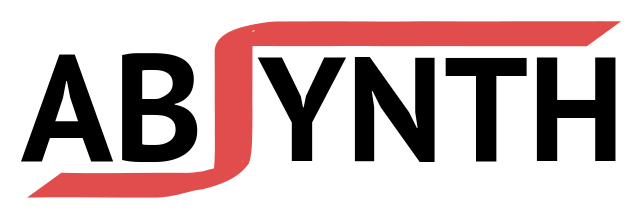
A Methodology and Framework for Transparent and Efficient Analog Circuit Design Automation

Subject:
Analog circuits, in particular, for the realization of versatile, dependable, and self-x sensor electronics, are of increasing importance. Application fields like Cyber-Physical-Systems, Internet-of-Things, or Industrie 4.0 have a strong demand with quite heterogeneous requests on the electronics properties. This advocates the design of custom circuits and systems tailored to the specificities of application domains and further kindles the activities on Analog Design Automation. This field offers interesting methods and tools, but specific mandatory features seem still not be well developed. Transparence of design, ease of use, design speed, and result quality are mandatory issues, which are not perfectly answered by existing approaches. This work introduces the ABSYNTH (Analog Block and system Sizing and sYNTHesis) design system, which roots in our related work on intelligent systems design and Computational Intelligence. This research has numerous links with our work on dynamically reconfigurable analog circuits, evolvable hardware, self-x systems, and Holistic Modelling of Integrated Intelligent Sensory Systems, as well as Advanced Methods for the Automation of Intelligent Sensory System Design. In particular, motivated by prior work on microelectronics process monitoring and data analysis, it offers the novel TRAVISOS Visualization for a transparent insight into complex design processes to the user. This opens the perspective to interactively guide design and optimization processes. Further, the optimization engine of ABSYNTH uses latest hybrid optimization techniques, including Harmony Search, Particle-Swarm-Optimization, Differential-Evolution, and Cuckoo Search, which can without much effort provide accurate and robust results. Our Framework can be interfaced with commercial tools like the Cadence Design Framework to employ the final sizing/synthesis results and advance to final physical design and production. ABSYNTH has been demonstrated with competitive results on various common building blocks of sensor electronics, e.g., Miller-, Folded-Cascode-, Buffer-, and Instrumentation Amplifiers. Design speed and result quality can be traded-off. ABSYNTH targets on combining human expertise and intuition with the systematic exploration of the computer for a fast and efficient design process.
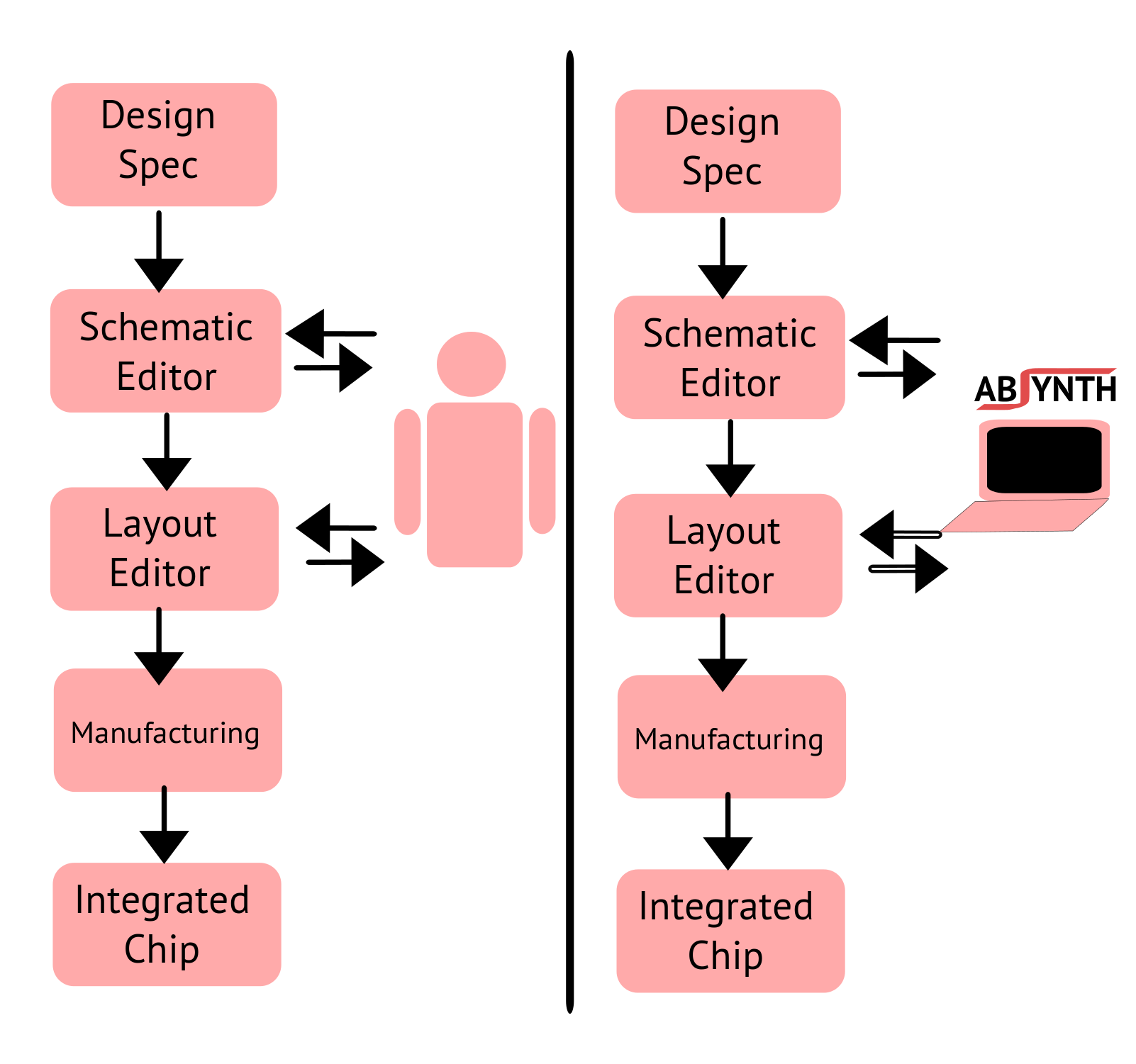
Abstract:
The power of Computational Intelligence has risen greatly in the last decade owing the Moore's Law. This has opened new possibilities in various fields from speech recognition (Cortana, Siri, Google Voice etc.) to Internet of Things. While ADA (Analog Design Automation) has been in research for the past two and a half decades, making use of Optimization Algorithms, the possibilities of using Computational Intelligence have been only recently explored. The initial steps of this exploration are shown in this work.
Flow:
The work flow of the framework is described in the image below. Here we can observe that we target automation of both linear and non-linear circuits which is unique. Our research goals include breeding of circuits (Evolvable Hardware), This includes both cross-pollination of different standard circuits and breeding a circuit without such seeds.
Compared to the present state-of-the-art tools, we find that there can be improvements in optimization algorithms and visualization techniques. We make use of Regression methods like SVR with simulators of differing complexity to provide faster and more accurate results.
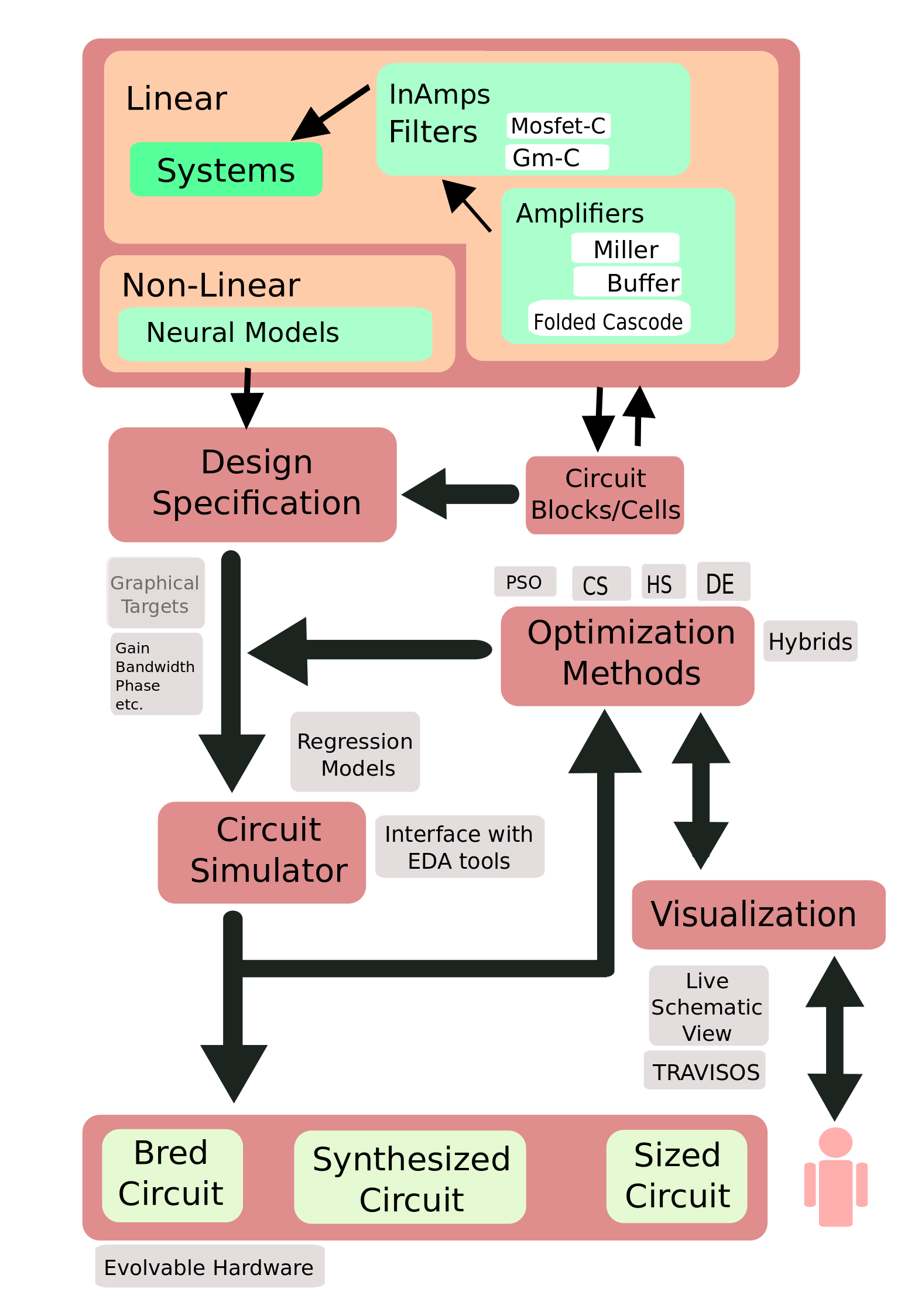
Visualization:
Visualization methods offer a clear view into the optimization process. This
transparency can help the user to understand and control how the employed computational intelligence methods
works. Our goal is to create interactive visualization where the user
can add goals to the process, add/modify solutions etc. We have shown 4 different
visualizations provided simultaneous in our tool at present. They are
able to clearly provide information about the status of the
multiobjective, multivariate problem and allow a dimension of user
involvement in the design process. This feature is unmatched by other
tools
in this area and is modular enough to be offered as a separate module
for inclusion in existing design environments.
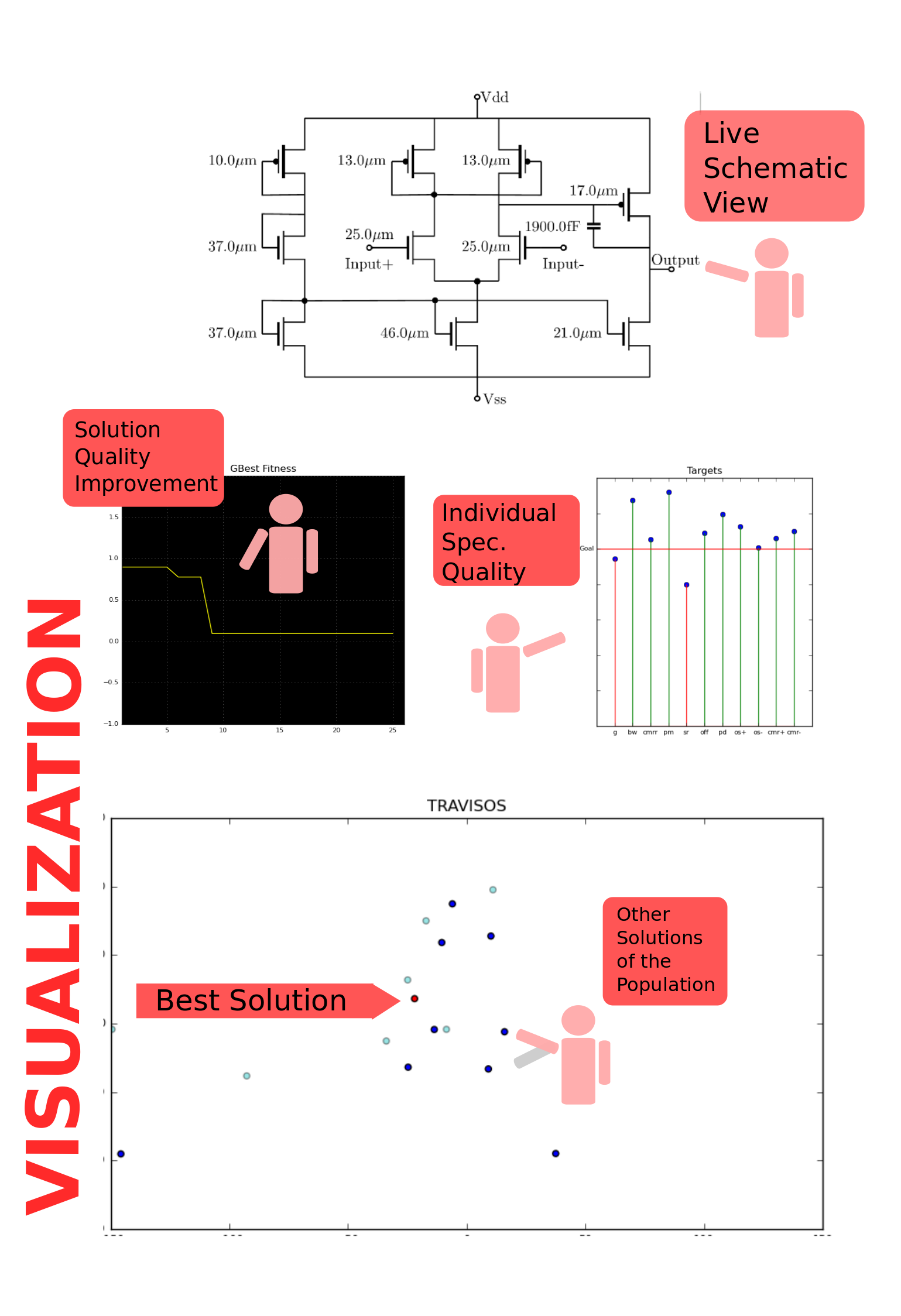
Case Study: Miller Amplifier
Here we show the demo of the tool with Miller amplifier. We can see the targets chosen in the right of the first image. In the second image we can see the visualizations corresponding the the state of the problem. Gain is the only objective to be reached. In the final figure we see all the targets reached. It must be noted that we are using nominal values here. In future work, the common statistical variations due to process, temperature etc will be added to the optimization.
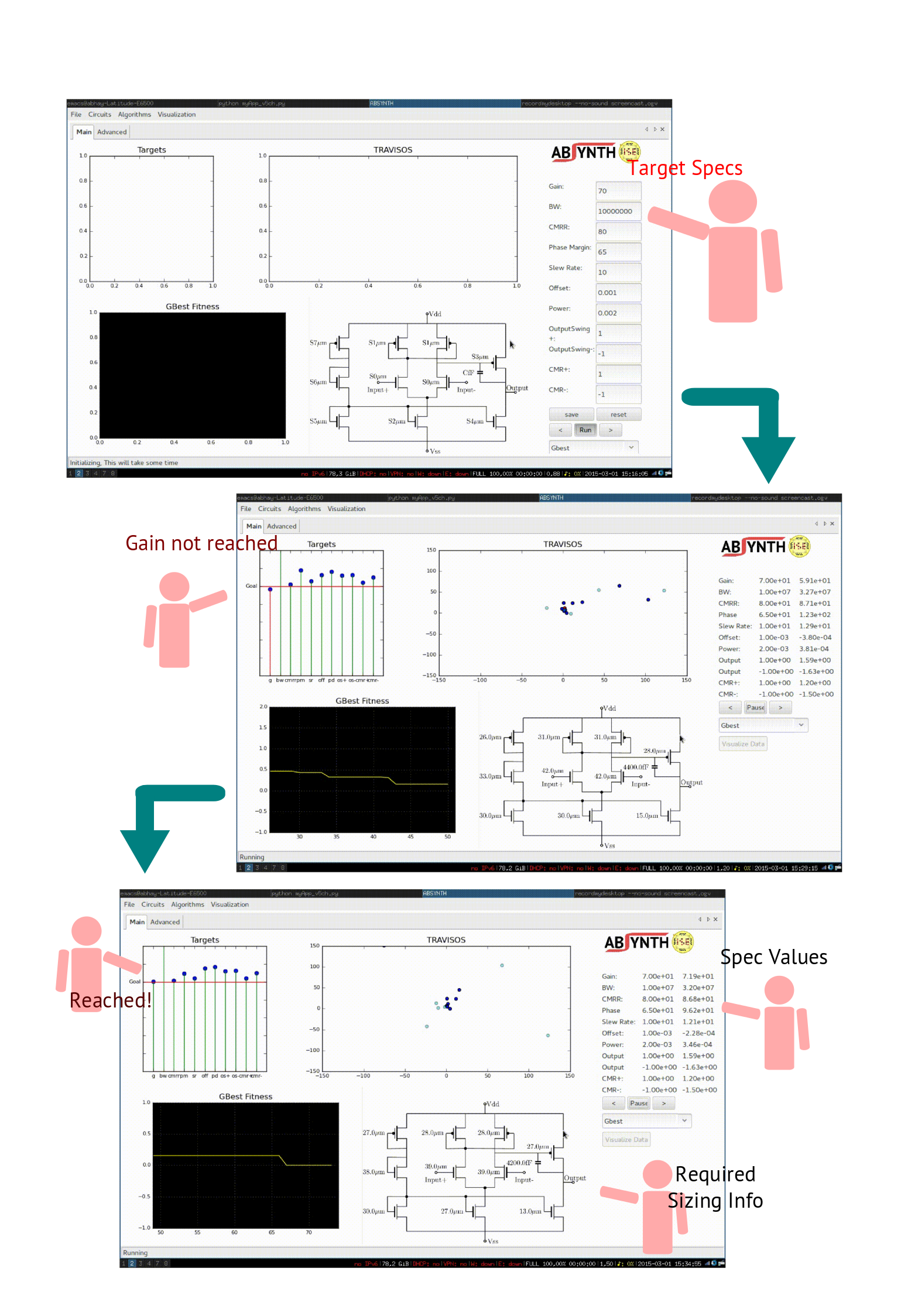
Present Capabilities and Future Objectives:
The goal of this work is to provide ABSYNTH as an add-on tool which works with various commercial and open source tools providing intelligence and better visualization capabilities to the respective tools.
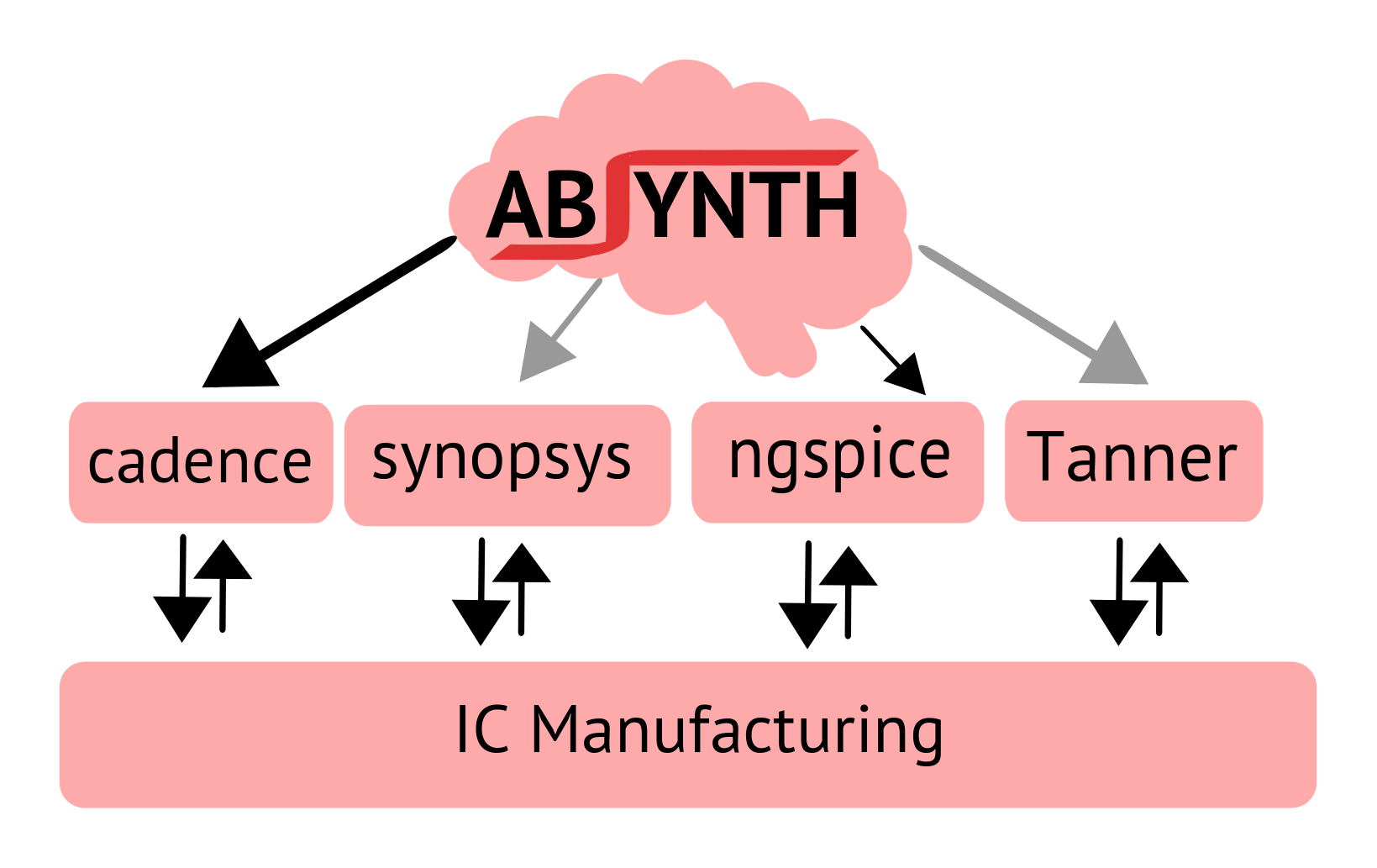
| Status: | Running, duration 08/01/2013 - today | ||||
| Partners: | - | ||||
| Financing: | Self-funded research | ||||
| PI/Contact: | Prof. Dr.-Ing. Andreas König | ||||
| Contributors: | M.Sc.
Abhay
Chandra Kammara (Hybrid
optimization, System design, GUI design, Optimization Algorithms,
Visualization implementation), Prof. Dr.-Ing. Andreas König (Interactive visualization and computational intelligence concepts for transparent automated analog circuit design) Past contributor: M.Sc. Lingaselvan Palanichamy (Master thesis on automated circuit sizing, Harmony Search algorithm implementation, ngspice interface and application examples), |
||||
| Publications: | |||||
|
|||||
| |
|||||
|
|
|||||
|
|||||
|
|
|||||
|
|